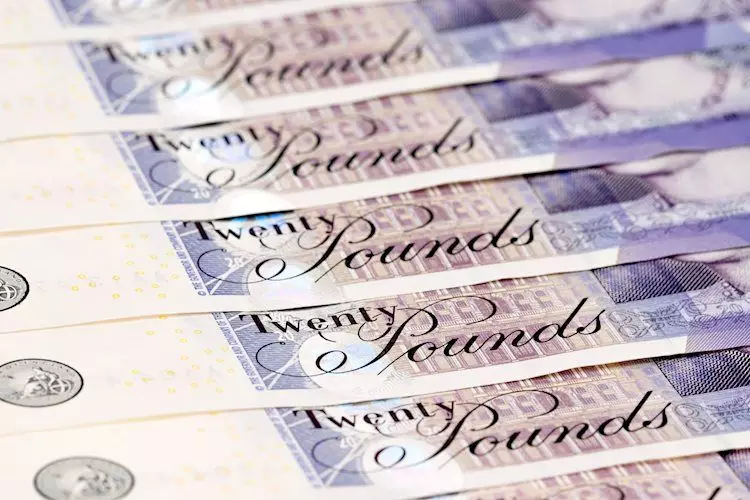In the realm of foreign exchange trading, the GBP/USD pair has recently shown a subtle uptick, navigating around the 1.3130 threshold during the Asian session on Monday. This development marks a brief interruption of consecutive losses that spanned three days. Nevertheless, any significant upward movement seems restrained, affected primarily by a shift in outlook concerning the Federal Reserve’s interest rate policies, especially following the publication of the recent Nonfarm Payrolls (NFP) data.
The NFP report published last Friday revealed a robust addition of 254,000 jobs in the U.S. for September, surpassing expectations that set the figure at 159,000. Further, average hourly earnings have seen a rise, climbing from 3.6% to 3.8%, coupled with a slight dip in the unemployment rate from 4.2% down to 4.1%. Such positive figures bolster the case for strength in the U.S. job market and economic resilience, nudging market participants to reconsider the plausibility of aggressive cuts by the Federal Reserve, which recently initiated a 50 basis point reduction.
The immediate impact of the NFP data has dramatically shifted market sentiments related to anticipated rate cuts. The CME FedWatch Tool indicates a staggering increase in market forecasts, now reflecting a nearly 97.4% likelihood for a 50 basis point reduction in the upcoming Federal Reserve meeting, a substantial leap from the previous 31.1% just prior to the NFP announcement. This newfound optimism for the U.S. labor market inherently impacts the U.S. dollar, creating a complex dynamic in the currency market where the greenback might maintain strength amidst the evolving economic landscape.
Moreover, the behavior of the U.S. dollar is further complicated by the prevailing dovish sentiment emanating from the Bank of England (BoE). Chief Economist Huw Pill’s recent comments suggesting that the BoE should adopt a cautious and gradual rate cut approach may undermine further confidence in the British Pound’s performance. Financial markets remain divided on the likelihood and timing of any additional rate cuts, particularly as they question whether the BoE will follow through with a cut in November followed by another in December.
The Pound Sterling (GBP) holds a venerable status as the oldest currency still in use, tracing its roots back to 886 AD. Today, it plays a crucial role in the global foreign exchange landscape, accounting for about 12% of daily trades, averaging an impressive $630 billion. Among its key trading partners, GBP/USD, nicknamed ‘Cable’, attracts significant attention, representing about 11% of the overall forex market.
Central to the fluctuations in the GBP’s value is the monetary policy instated by the Bank of England. Specifically, the BoE aims to maintain “price stability” — ideally keeping inflation at approximately 2%. The BoE utilizes interest rate adjustments as its primary mechanism to navigate inflation dynamics. When inflation rates are elevated, raising interest rates effectively curtails borrowing, thereby strengthening the Pound, as higher returns attract foreign investments. Conversely, if inflation rates dwindle, resulting in slowed economic growth, the BoE may pivot towards interest rate reductions to stimulate borrowing and investment.
Economic indicators play a pivotal role in shaping the direction of the Pound Sterling. Employment metrics, GDP growth rates, and Purchasing Managers’ Indices (PMIs) in the manufacturing and services sectors serve as vital gauges of economic health. Strong economic performance not only garners increased foreign investment but may also compel the Bank of England to consider elevating interest rates, further enhancing the market’s perception of the GBP. Conversely, lackluster data can lead to downward pressure on the currency, contributing to its decline against other major currencies.
Another significant barometer for the Pound is the Trade Balance, which presents the disparity between a country’s exports and imports. A favorable Trade Balance fosters demand for the national currency, as external buyers seek domestic products. Therefore, a positive net Trade Balance can lend strength to the GBP, while a negative standing undermines its appeal.
As the market digests the implications of the recent NFP data alongside the cautious posturing from the Bank of England, future movements of the GBP/USD currency pair will rest heavily on forthcoming economic indicators and central bank decisions. Investors must remain vigilant, monitoring these dynamics closely, as they navigate an increasingly intricate landscape defined by shifting monetary policies and economic trends. The interplay between U.S. and UK economic health will undoubtedly continue to shape the discourse around currency trading, making it essential for market participants to stay informed and adaptable.


Leave a Reply